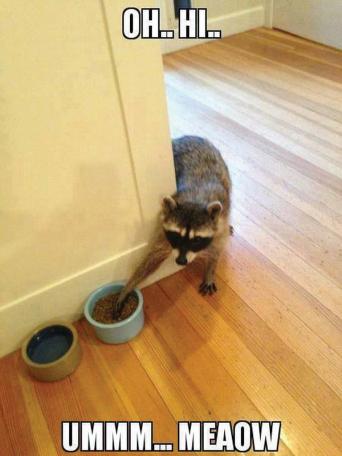
Disinvite Those 4-Legged Winter House Guests

With winter just around the corner (yes, sadly, it’s true), animals will begin looking for suitable housing to survive freezing temperatures, snow and ice. And that suitable housing might just also belong to you.
Because wild animals have lost so much of their natural habitat to development, they have discovered that co-habiting with humans isn’t so bad. Neighborhoods provide plenty of food (we call it “garbage”), shelter and water. Expensive exotic landscaping is appealing to deer, and there are endless aromas wafting through homes and restaurants enticing wildlife to come check them out.
More than half of Americans use chemicals and pest-control services, according to the National Pest Management Association. A home’s age or cleanliness is not a factor in wild animals’ selection process when they move into homes, attics, basements and chimneys. But several other obvious conditions are quite inviting.
I hold a Nuisance Wildlife License through the Pennsylvania Game Commission, which means I have been trained and can charge to remove “nuisance” animals from your home. I don’t want to have to do this; I go out of my way to avoid trapping. I got my license not because I want to benefit financially from animals but because I want to educate the public on how to co-exist peacefully with them. Yes, it is possible.
Wildlife is an essential thread in our environmental tapestry. Having done wildlife rehabilitation for 25 years, I have heard so much misinformation about animals, often promulgated by unethical critter-control companies in the hope it will help the bottom line. It is the animals who suffer from these misconceptions and myths.
Fortunately for the environment, most exterminators don’t use the toxic chemicals they did 20 years ago. Today, most professionals know that they must find the animals’ entry points into the home. Cracks in foundations, roof lines and damaged windows and missing screens around eaves are all common problems.
Homeowners have plenty of ways to keep unwanted animals out. Start with a stroll around the house. Assess the outside for gaps and holes. Look for tree limbs touching your roof. Is your chimney capped? If not, install an animal-proof chimney cap. Vines can be a highway for animals to move about the exterior of your home. Monitor where different building materials join, including window wells. Fill in cracks around pipes and cables. Stack firewood away from your house. Cover compost piles.
Remember that mice only need a gap about the size of a quarter to get in. The first place they will head is the kitchen. Keep all food in glass or plastic containers. (I have a mental image of mice laughing at the “sealed” bags from which they are enjoying dinner.) Put steel wool pads in the spaces where radiator pipes or other conduits pass through floors.
People tell me they don’t want the animal harmed, they just want it gone. But if an animal is considered a nuisance animal, by law it must be killed if trapped. The methods used to kill these animals are not pretty. (Ironically, if an animal is injured, it can be taken to a wildlife rehab facility but if it is young and healthy, it must be killed. Doesn’t make sense, does it? But I don’t make the rules; the Game Commission is in charge.) And trapping and removing an animal is like putting a neon sign on the lawn to say that there is an opening, inviting new critters to move in.
Yes, animals and humans can co-exist peacefully. Trapping and removing an animal is not a very good solution. People don’t like to hear this, but if you don’t want birds or squirrels or anything wild in your yard, you should consider moving to a high-rise. You might have to deal with roaches, but you won’t be bothered by squirrels or raccoons. Then maybe everyone can live happily ever after.
Brenda Malinics runs the all-volunteer Brenda’s Cat Rescue (www.brendascatrescue.org). Contact her at bmalinics@gmail.com.
